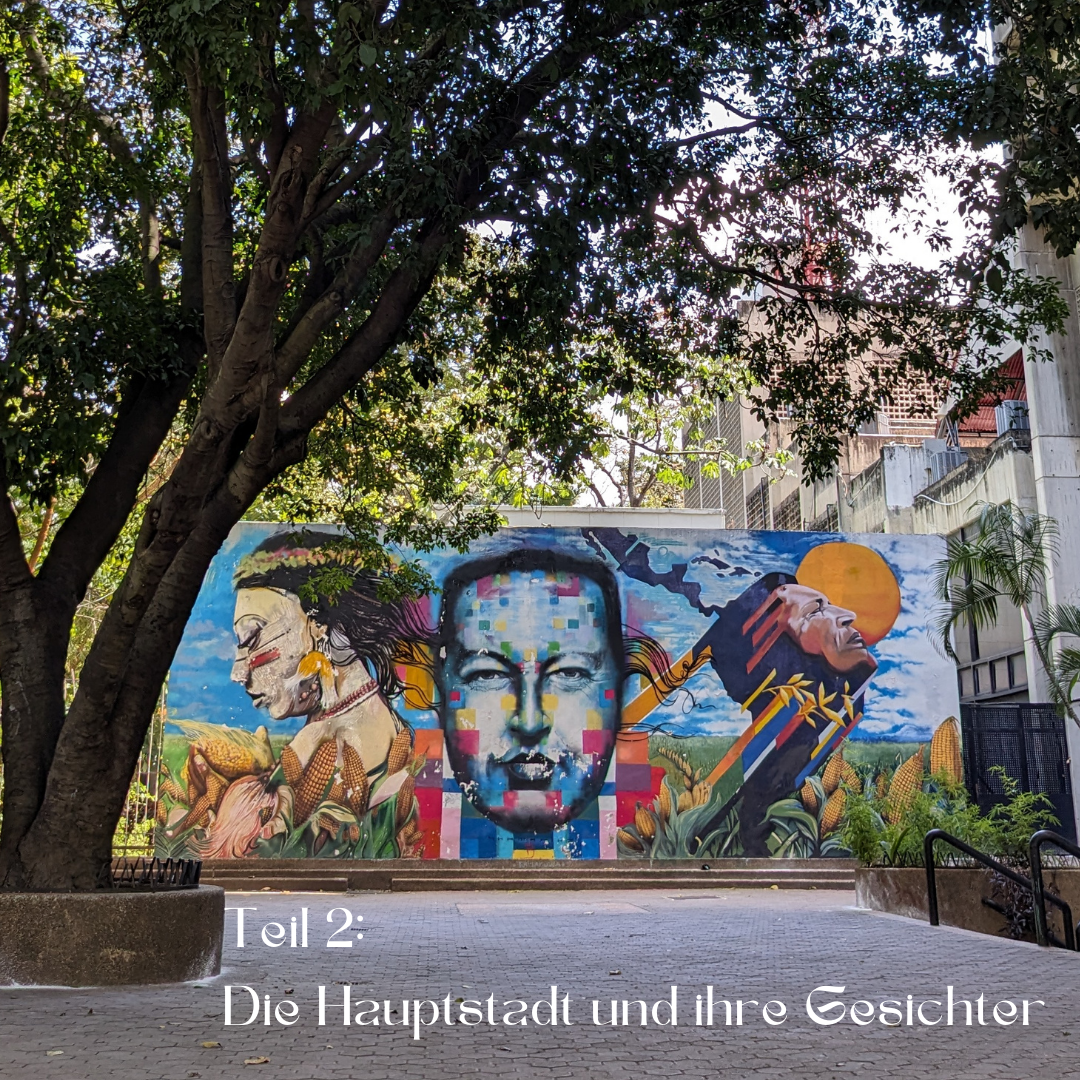
Venezuela '24 Part 2: The capital and its faces
Share

Here we go – Steve and I start in Erfurt with mixed feelings.
It's the first time we've left our beloved four-legged friends alone for such a long time. But the anticipation is also immense. Finally, to experience the sun, the cocoa, and the serenity of the people in Latin America.
In Hanover, David hands us two, let's say, somewhat unwieldy "packages." Well, let's see how we explain the gong, the cow dung for the Agni Hotra, and the CDL crew ration to customs. :)
After converting some rope and cords into straps and explaining everything clearly to customs, we're on the plane to Istanbul.
After a few hours' layover, we continue on to Caracas. The flight from Turkey took only 14 hours.
Having landed in Caracas, laden with two huge backpacks and two pieces of oversized luggage, we stroll lightly to the bus. The bus takes us downtown, where we try to find our Couchsurfing host without internet access. 
For me, Venezuela has a lot of Tenerife characteristics from the very first moment.
The architecture, the energy, the nature. Later, we learn that this is due to the large wave of emigration during the civil war. Many residents of the Canary Islands fled to Venezuela. Today, it's the other way around.
From the airport, we drive over impressive, green mountains. The people seem surprised. We are the only "white" people. We are often greeted, greeted, and welcomed in a friendly manner.
But getting internet access and gaining someone's trust seems harder than expected.
After a few breaks for luggage and pastries, we arrive at Rodolfo’s.
He hosts travelers from all over the world in his Caracas home almost every week. So, a tourist does come by every week. How nice :) 

For many people, Venezuela is still very prejudiced. But the crisis is over. People are doing better, and above all, I can personally say that I have always felt safe.
To be honest, the signs on business doors saying that dogs and weapons must be kept outside are a bit frightening, but at least in my opinion, they are a thing of the past. 
Rodolfo gives us a little tour of the city center and I'm surprised at how quickly I, as a "non-city fan," feel at home.
It's currently Carnival, many shops are closed, and people are out and about in the parks. It's a great opportunity for us to immerse ourselves in the culture. People are playing music and dancing in the streets, and we feel great.
The city is full of murals, and messages more or less hidden within them. Very impressive. 
South American street food is at its most classic on the roadside: hamburgers, hot dogs, ice cream.
Clear... Everything is double-fried and not particularly appealing to us.
I'm really grateful for all the huge markets, or the trucks on the side of the road that sell 2 kg of mango for a dollar. It's fantastic. 
Fundamentally, I immediately notice that it's difficult for me to understand the system. A hamburger costs $6, rice costs $2, and a deodorant from the supermarket costs a cool $5. All of this with an average monthly income of about $50-80. That's if you have a job. 
We enjoy the time with Rodolfo and two other couchsurfers.
Natalia from Moldova and Nora from Vienna.
We laugh, explore, and chat together. On our last evening together, we cook the most classic Venezuelan dish: arepas.
Corn flour flatbreads. Super delicious. 
After five days the time has come - David, Kristin and Katharina arrive in Caracas and we are very excited to see them.
Now it's time for the first time - pack up the backpack again, untie the packages and find the agreed meeting point.
Still – without internet. ;-)
Next time, I'll tell you more about our first meeting, the trip to Macuro, and getting around Venezuela. :)
